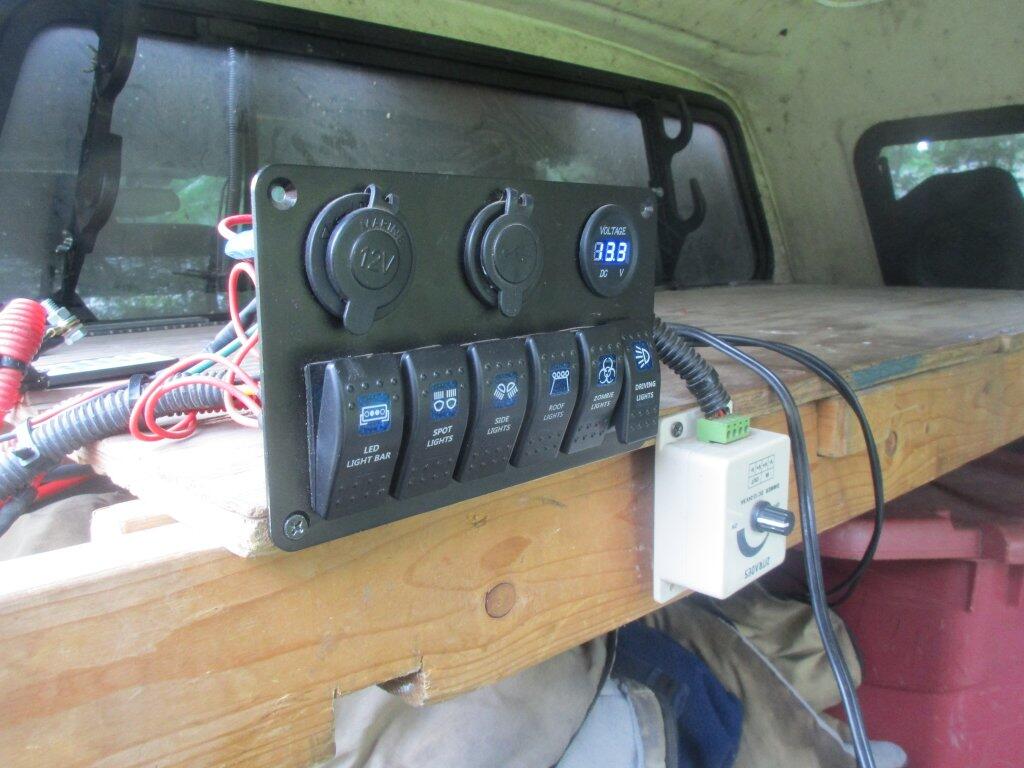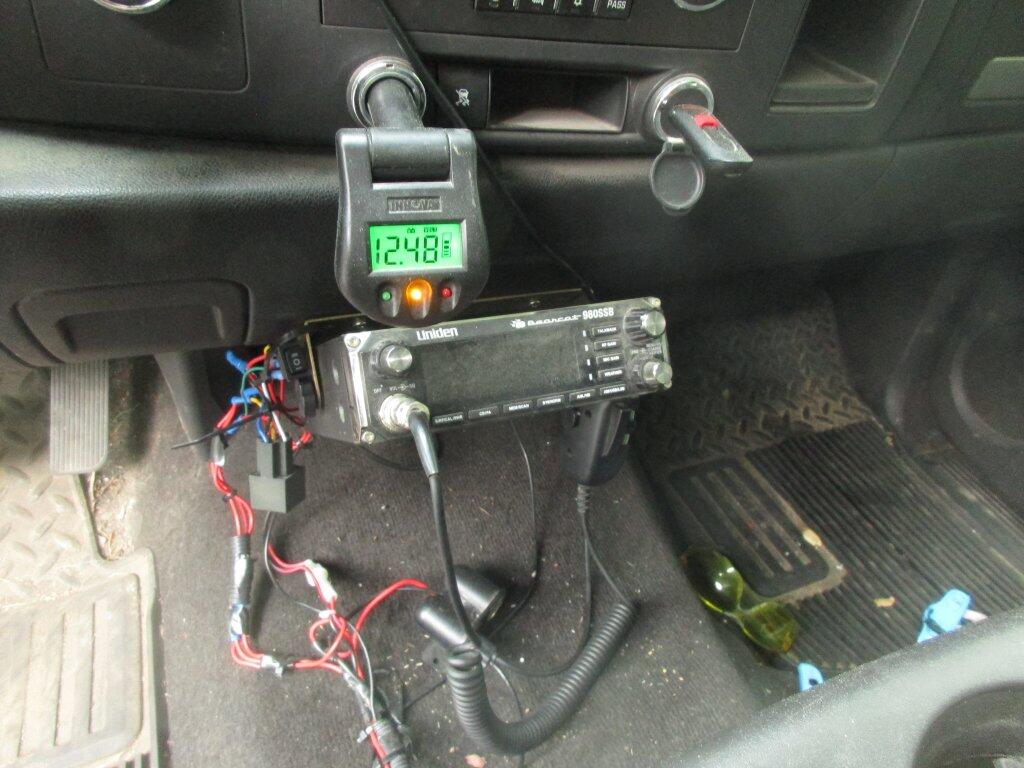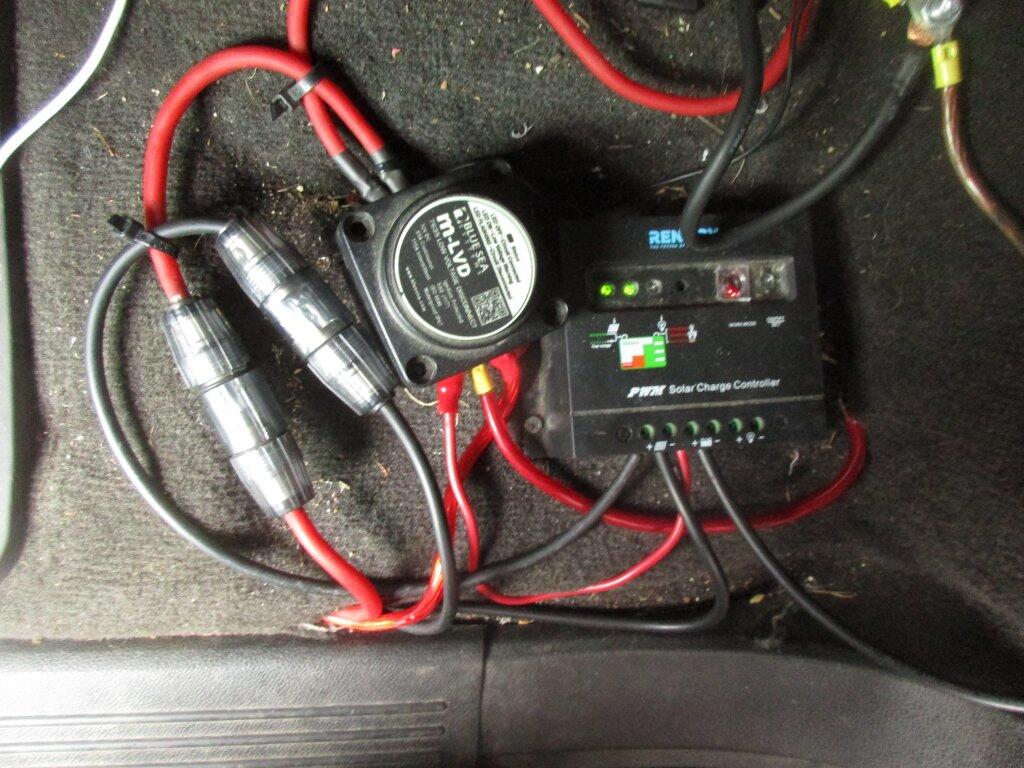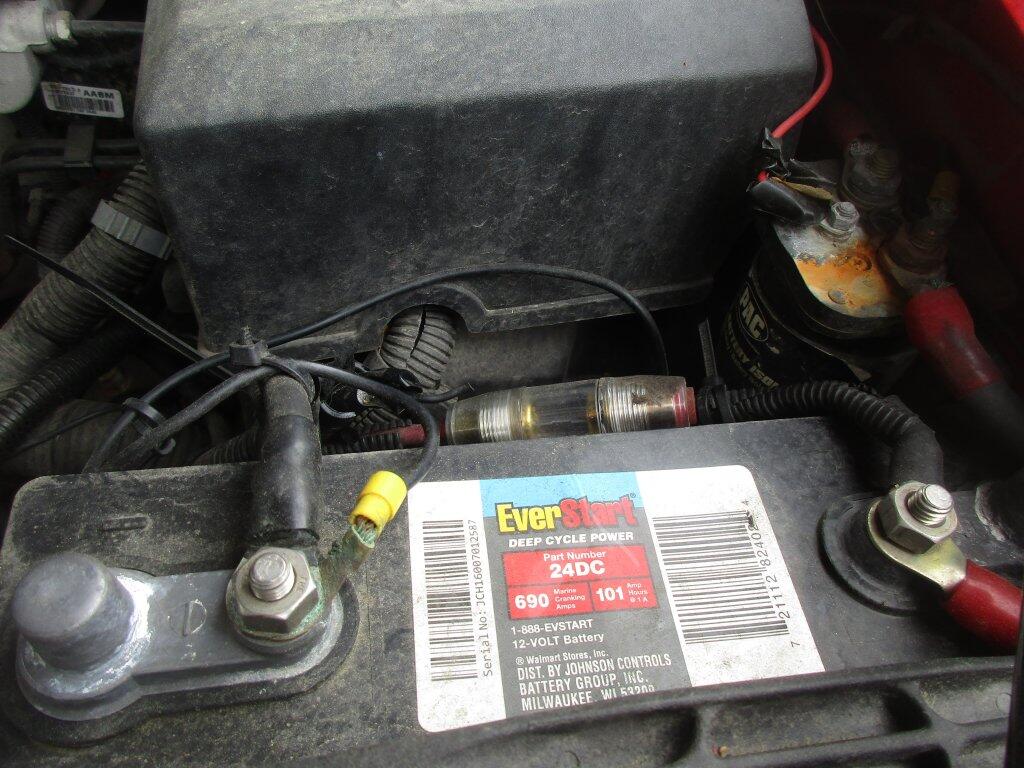Big Red
Switch Box
100 Watt Panel
Starting Battery Voltage Monitor – CB Radio – Power For Dashcam And Cell Phone – Switch Controlling Isolator Relay
Low Voltage Disconnect Relay – Solar Controller
Big Red’s Solar Project – An Update
This past weekend i took some pictures of my camp power system on my truck, that is mostly solar powered, although I do maintain a connection to the alternator for rare occasions I need to pull power off that system. I’ll be featuring those pictures over the blog on next few days, to skip over the Solar Project section of the blog.
Goal of System
The goal of my camp power system is provide electricity that is reliable, simple to use for 2-3 days in shade or cloudy weather for small usually USB electronics and LED lighting at night, including LED light to illuminate the site both for decorative purposes and to keep from tripping. My wattage draw is roughly 20 watts/hour, during the night time, although it can very depending if I’m reading or cooking, or if I want the site particularly dark for enjoying the stars.
This is the system I’ve built up over the past 15 years or so of experimentation. I am averaging about 600 watt/hr a week off the panel, but a lot more potential power is discarded as the batteries float by 10 or 11 most morning. When I’m camping, power production increases because consumption is higher, when the truck is parked, batteries are charged, and there is nothing be used, only a few watts are generated.
My goal is not just to improve my camping experience, but learn more about energy and solar power. I hope eventually to have an off-grid home, and the more I can learn now with my relatively small system, the more I’ll be prepared for living off-grid.
Here are the components of my camp/accessory power system in my truck:
100 watt panel – controlled by a Renology 20 amp PWM controller. I might eventually upgrade to a MPPT controller for better performance in the winter/shade, but I’m debating the value of that – as I’m going to have to move components around to fit the larger MPPT controller.
Storage – Panel feeds power into two Group 24 deep cycle batteries, each rated at 100-amp hour each at full discharge. Figuring I don’t want to ever go below 50% discharge maximum, that works out to a combined 100-amp hours of power (50 amp x 2) or roughly 1.2 kWh of storage (less due to losses).
Under Voltage Protection – In case lights get left on or something like a heavier load like my laptop is left hooked up for an extended period, all loads automatically disconnect at 30 seconds below 12.1 volts. This protects the accessory batteries from damage. Rarely do I ever go below 12.5 volts (unloaded) or 80% discharge with my current system. Relay automatically resets when battery voltage is above 13 volts for 5 minutes or 13.5 volts for 30 seconds.
Fuses – 40 amp fuses between starting-accessory battery, battery 1 & 2 hot terminals, feeder line from low voltage disconnect back to cab, solar panel, plus 20 amp fuse protecting line going to in-cab feeds.
Alternator Connection – Alternatively, an isolator relay can be connected to feed power in from the alternator based on a switch next to my CB radio.
Position 0: No connection between vehicle and camp/accessory power (used normally)
Position 1: Alternator/vehicle power system feeds supplemental power to accessories and batteries (used on long road trips when kayak is on roof blocking solar panel or long trips at night or extended cloudly periods, neccessary as CB radio/dash cam/phone pull power from system). Relay is enabled only when the engine is on – it is excited by a fuse tap on the idle engine sensor. Disconnects automatically to avoid accidental discharge when camping
Position 2: Vehicle power system is connected to accessory system while engine is on or off. Used to top off the starting battery via solar for extended periods while camping, to make up for losses opening and closing doors, door lights in cab, etc.





